Abstract
Interactions between heparin and protamine in normal human serum previously were found to activate the primary complement pathway and deplete the early-acting complement components. In the present investigation, the role of heparin-protamine complexes, immunoglobulins, C1q and C1-INH in this interaction was studied. Heparin and protamine, like antibody and antigen, were found to combine in multiple proportions; those proportions which resulted in optimal precipitation also induced maximal C consumption. Complexes formed in serum contained C1q and IgG, but the amount of C1q was insufficient to account for the total depletion of C1 haemolytic activity, and immunoglobulins were not required for activation of complement to occur: maximal consumption was observed in immunoabsorbed hypogammaglobulinaemic sera in which IgG, IgM and IgA were undetectable (less than 5, less than 10 and less than 7 mug/ml, respectively). Purified C1q aggregated heparin-protamine complexes formed or forming in the presence or absence of serum. The ability to induce maximal C consumption was rapidly lost as heparin and protamine interacted, and complexes preformed either in serum or buffer, or supernates thereof, were relatively ineffective in complement consumption. Thus, the consumption of complement seems to occur via transient reactivity with C1,probably at the level of C1q. It seems to be limited by the ability of free heparin to potentiate the activity of C1-INH, and perhaps also by its direct effect upon the early acting C components. These experiments support the concept that complement activation by interactions between polyelectrolytes such as heparin and protamine, like interactions between the antibodies and antigens, may have a role in the initiation of inflammatory reactions by direct activation of the complement system.
Full text
PDF
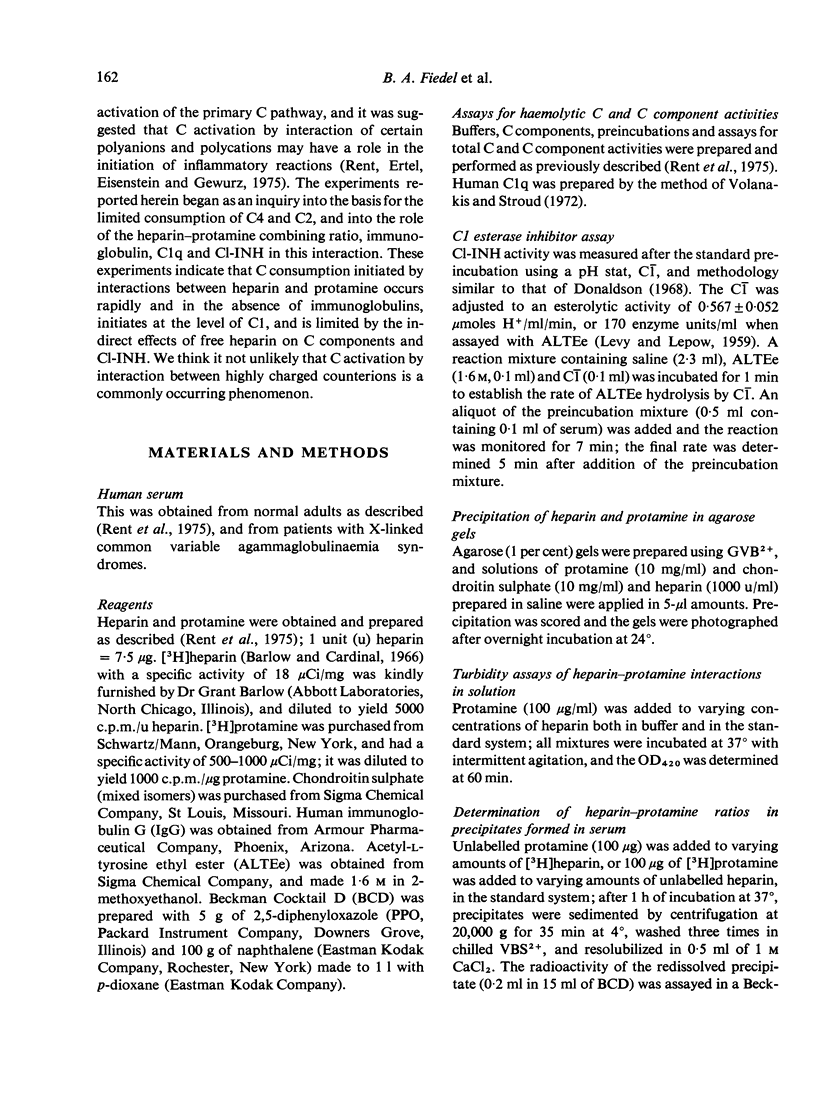
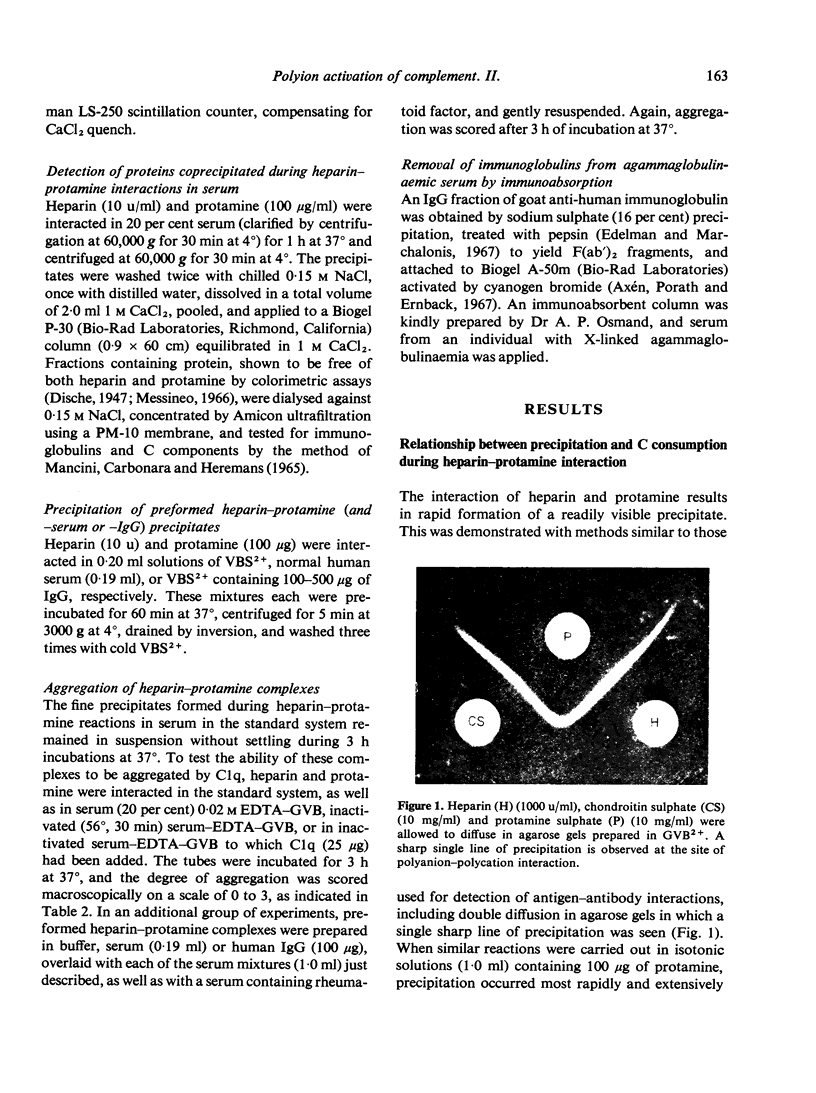
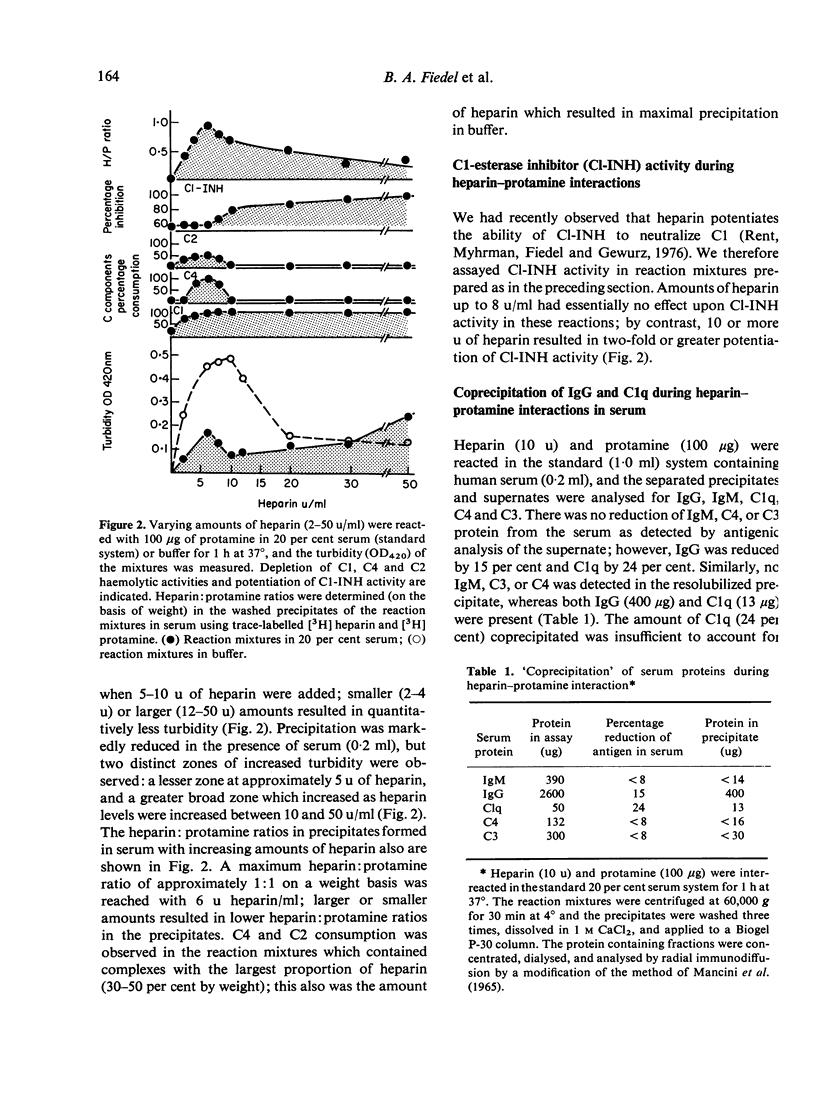


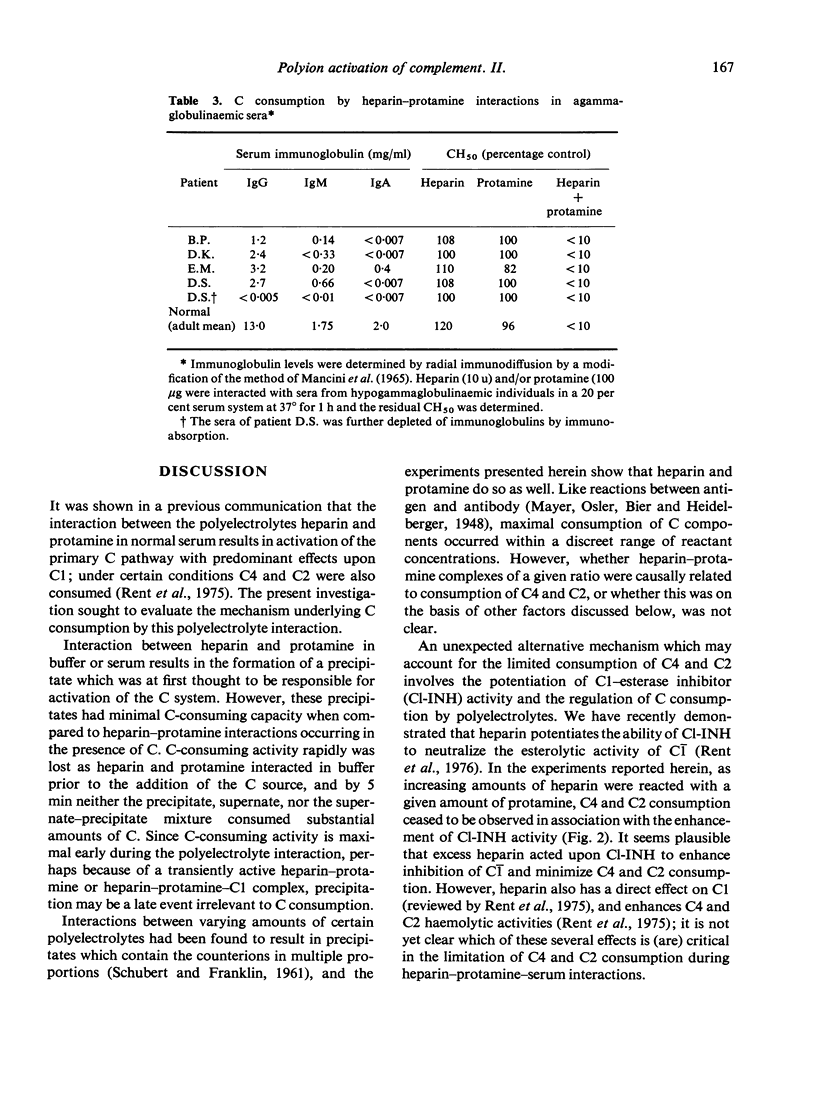
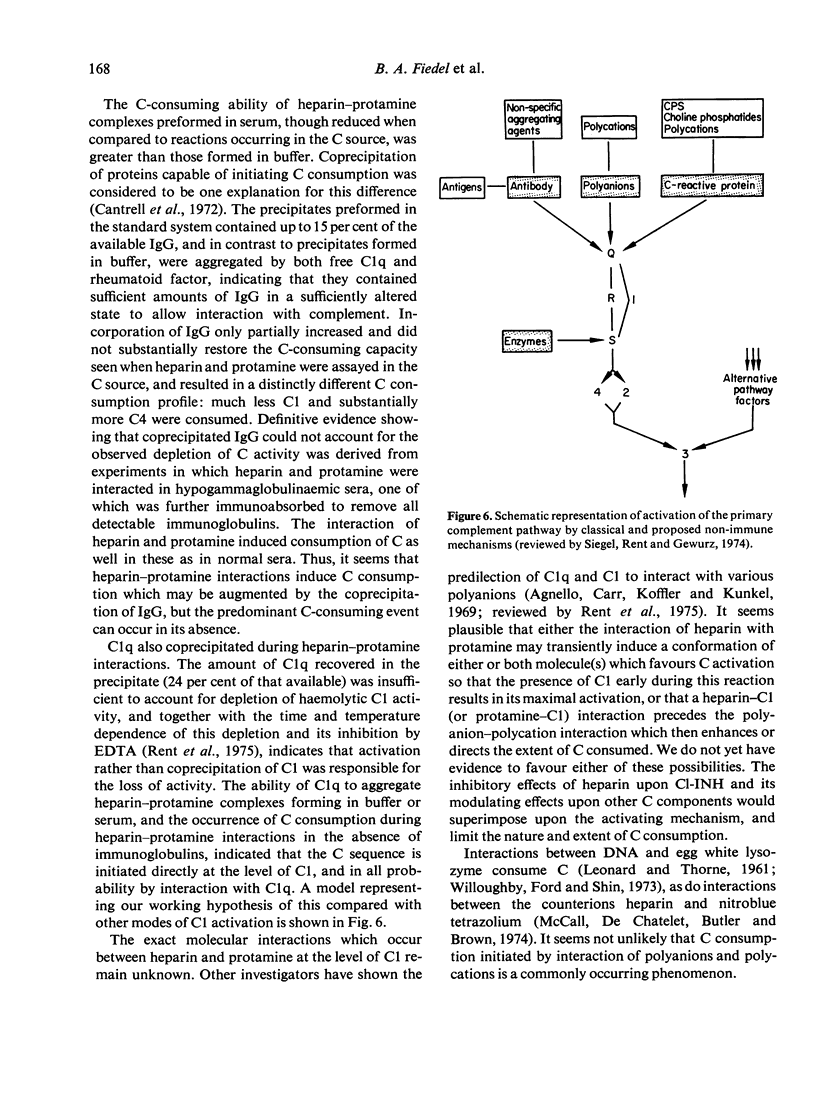

Images in this article
Selected References
These references are in PubMed. This may not be the complete list of references from this article.
- Axén R., Porath J., Ernback S. Chemical coupling of peptides and proteins to polysaccharides by means of cyanogen halides. Nature. 1967 Jun 24;214(5095):1302–1304. doi: 10.1038/2141302a0. [DOI] [PubMed] [Google Scholar]
- Barlow G. H., Cardinal E. V. Preparation and characterization of tritiated heparin. Proc Soc Exp Biol Med. 1966 Dec;123(3):831–832. doi: 10.3181/00379727-123-31616. [DOI] [PubMed] [Google Scholar]
- Cantrell J. W., Stroud R. M., Pruitt K. M. Insulin and IgG complexes. An immunologic bypass for complement activation. Diabetes. 1972 Aug;21(8):872–880. doi: 10.2337/diab.21.8.872. [DOI] [PubMed] [Google Scholar]
- Donaldson V. H. Mechanisms of activation of C'1 esterase in hereditary angioneurotic edema plasma in vitro. J Exp Med. 1968 Mar 1;127(3):411–429. doi: 10.1084/jem.127.3.411. [DOI] [PMC free article] [PubMed] [Google Scholar]
- Ewald R. W., Schubart A. F. Agglutinating activity of the complement component C'1q in the F-II latex fixation test. J Immunol. 1966 Jul;97(1):100–105. [PubMed] [Google Scholar]
- LEONARD C. G., THORNE C. B. Studies on the non-specific precipitation of basic serum proteins with gamma-glutamyl polypeptides. J Immunol. 1961 Aug;87:175–188. [PubMed] [Google Scholar]
- LEVY L. R., LEPOW I. H. Assay and properties of serum inhibitor of C'l-esterase. Proc Soc Exp Biol Med. 1959 Aug-Sep;101:608–611. doi: 10.3181/00379727-101-25034. [DOI] [PubMed] [Google Scholar]
- Mancini G., Carbonara A. O., Heremans J. F. Immunochemical quantitation of antigens by single radial immunodiffusion. Immunochemistry. 1965 Sep;2(3):235–254. doi: 10.1016/0019-2791(65)90004-2. [DOI] [PubMed] [Google Scholar]
- McCall C. E., DeChatelet L. R., Butler R., Brown D. Enhanced phagocytic capacity. The biologic basis for the elevated histochemical nitroblue tetrazolium reaction. J Clin Invest. 1974 Nov;54(5):1227–1234. doi: 10.1172/JCI107866. [DOI] [PMC free article] [PubMed] [Google Scholar]
- PLOTZ C. M., SINGER J. M. The latex fixation test. I. Application to the serologic diagnosis of rheumatoid arthritis. Am J Med. 1956 Dec;21(6):888–892. [PubMed] [Google Scholar]
- Rent R., Ertel N., Eisenstein R., Gewurz H. Complement activation by interaction of polyanions and polycations. I. Heparin-protamine induced consumption of complement. J Immunol. 1975 Jan;114(1 Pt 1):120–124. [PubMed] [Google Scholar]
- Siegel J., Rent R., Gewurz H. Interactions of C-reactive protein with the complement system. I. Protamine-induced consumption of complement in acute phase sera. J Exp Med. 1974 Sep 1;140(3):631–647. doi: 10.1084/jem.140.3.631. [DOI] [PMC free article] [PubMed] [Google Scholar]
- Volanakis J. E., Stroud R. M. Rabbit C1q: purification, functional and structural studies. J Immunol Methods. 1972 Nov;2(1):25–34. doi: 10.1016/0022-1759(72)90014-2. [DOI] [PubMed] [Google Scholar]



